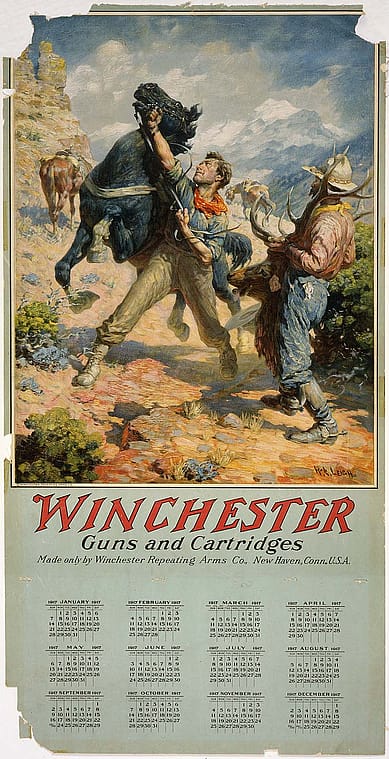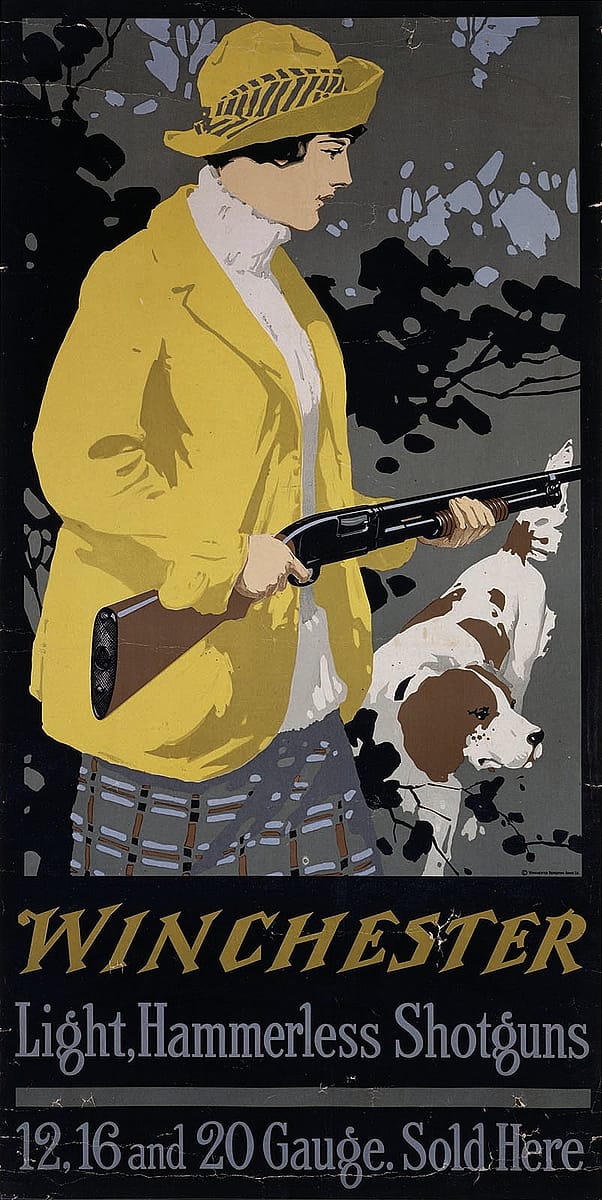
150 Years On Target – Points West Online
Originally published in Points West magazine
Fall 2016
150 Years On Target
New Mexico Electric News, May–June 1966
An unlikely magazine—New Mexico Electric News, May–June 1966—featured a story on that year’s 100th anniversary of Winchester Firearms. While the company now celebrated its 150th anniversary in 2016 when this reprint appeared in Points West, this article says it all about Winchester’s history, its importance, and its longevity, updated with images from today’s Buffalo Bill Center of the West collections.
Product testimonials from Buffalo Bill Cody, President Theodore Roosevelt, and Chief Sitting Bull make more than sales, they make history. And so it was for the new Winchester Repeating Arms Company (WRAC) a century ago when opening of the last frontiers stretched west of the Mississippi. It was in 1866, a year after the Civil War ended, that Oliver Fisher Winchester founded the company in New Haven, Connecticut. Success was based upon introduction and mass production of the first practical repeating rifle.
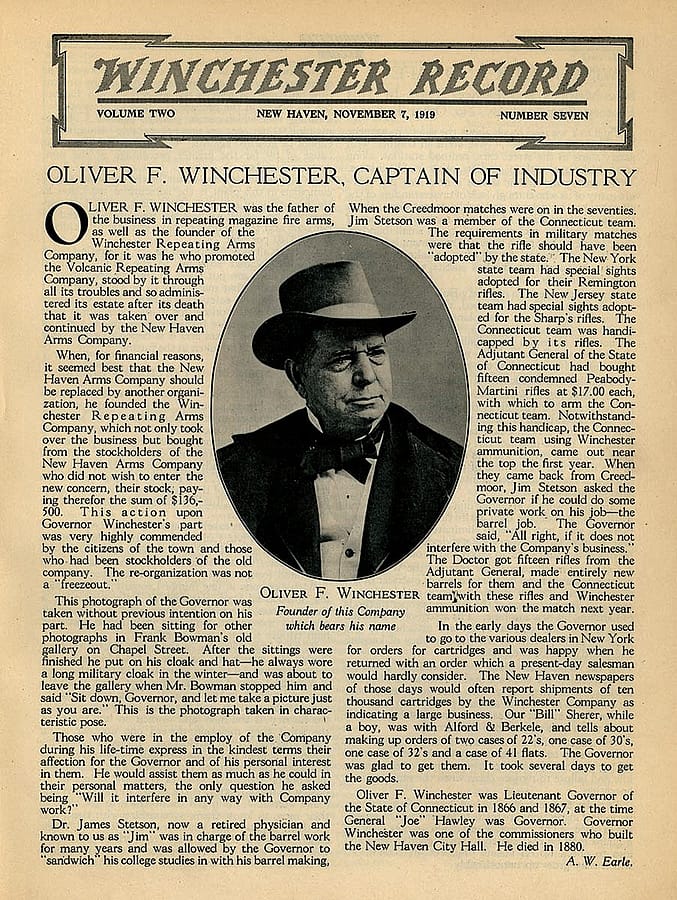
Acceptance of Winchester’s early models proved that a long-standing demand was finally being supplied. From Mexico, Benito Juarez ordered 1,000 of the first Model 66 rifles to augment the firepower his forces needed to free Mexico from the Napoleonic occupiers. A more powerful version of Model 66, the Winchester Model ’73, became standard equipment with the Colt revolver for western pioneers—it was celebrated as “the gun that won the West.”
So impressed with it was Colonel Buffalo Bill Cody that he wrote the company in 1875 stating, “I have used and have thoroughly tested your latest improved rifle. I pronounce your improved Winchester ‘the boss.’ Believe me that you have the most complete rifle now made.”

Several years later, President Teddy Roosevelt wrote to WRAC about the new Model 76, saying, “The Winchester is the best gun for any game to be found in the United States.”
There are no extant writings to document Sitting Bull’s appreciation of the Winchester repeater, but it can be believed that he surrendered with reluctance his own Model 66 to the government in 1881—which rifle is now in the Smithsonian Institution in Washington, DC.

The repeating rifle, in fact, was little more than an arms concept when Oliver Winchester set up shop one hundred years ago [now 150]. A forerunner, the Volitional Repeater invented by a New Yorker named Walter Hunt in 1849, was ruled out of all but historical value by an overweight and overly complex repeating mechanism. The Henry rifle, manufactured by the New Haven Arms Company, owned by Winchester before he formed WRAC, did serve in the Civil War, but mainly as the personal arms of state militiamen. Military examiners discredited it as too delicate for the field and incapable of withstanding the explosive force of military ammunition.
Similar to the Henry rifle of 1862 was the first firearm to bear Winchester’s name, the Model 66 (1866), though it was lighter, stronger, and could fire two rounds per second to Henry’s one shot every three seconds. The Winchester just naturally became the “extra arm” of settler and cowboy, soldier, and hunter. Between 1866 and 1872, the net worth of the Winchester Repeating Arms Company rose from $450,000 to $1.1 million. As the firearm industry grew, so did the demand for better ammunition.
Winchester added chemical ballistics laboratories and special ammunition storage facilities to the plant. In 1883, the company erected a brass rolling mill for the manufacture of metallic cartridges. WRAC ordnance research pioneered the most important sporting ammunition development of the era, smokeless powder cartridges, much more powerful than customary black powder ammunition. The same year, the company brought out its famous Model 1894. Still in the line, with more than three million produced, the Model 94 “thirty-thirty” is credited with accounting for more deer than any other rifle in history.
An equally famous Winchester is the Model 12 shotgun, introduced in 1912. More of the slide-action Model 12 shotguns have been produced than the shotguns of any manufacture in the world—almost two million.
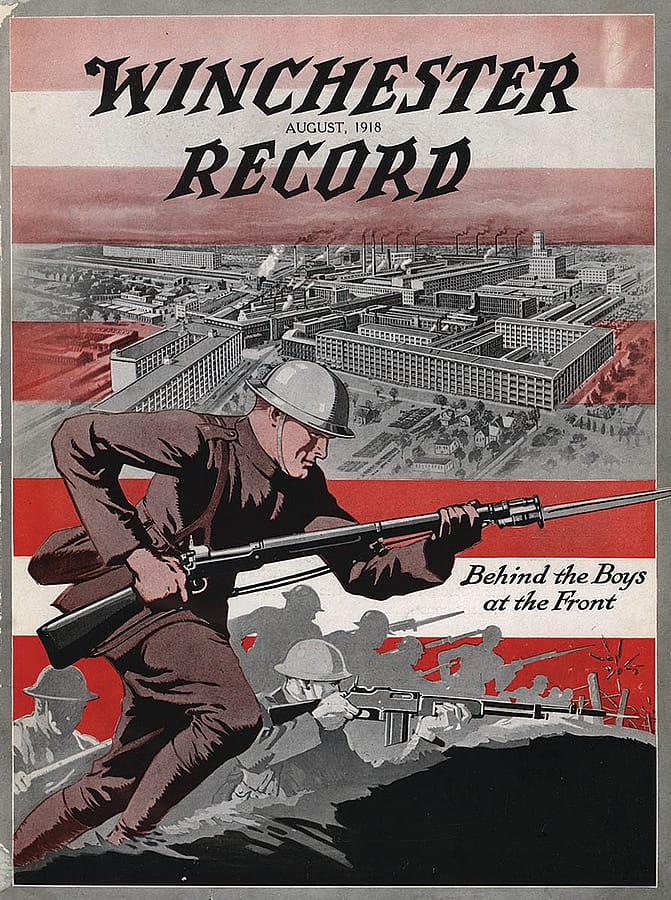
It was therefore, a strong sporting arms company that went to war for the U.S. and her allies in 1915. Winchester firearms served then as they have done in all succeeding conflicts up to the present one [i.e. 1966] in Viet Nam. In 1931, the company, drained by idle wartime production facilities and hard hit by the Great Depression, was purchased by Western Cartridge Company. With the merger, Winchester-Western became the largest owner of patents on firearms and ammunition developments in history.
This year [i.e. 1966], Winchester-Western, a division of Olin Mathieson Chemical Corporation since 1954, celebrates a century of arms leadership—more lever-action rifles have been made than any other single type of big game rifle. Highlighting the 100-year birthday is the introduction in rifle and carbine styles of the Winchester Centennial ’66, an up-to-date operating replica of the finest lever-action Winchester Model 1866.
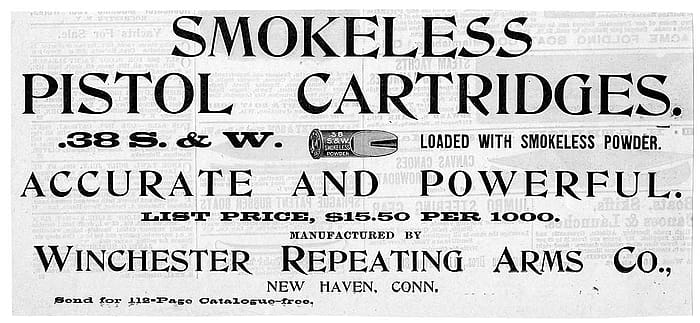
In creating the new firearm, historical genuineness has been given the same careful attention as engineering precision. The receiver of the Centennial ’66 was specially gold-plated to match in appearance the metallic finish of its prototype, because the shiny brass of Sitting Bull’s Model 66 inspired the Sioux chief to dub his Winchester “Yellow Boy,” an epithet which earned respect on both sides of the frontier a century ago.
Post 311
Written By
Nancy McClure
Nancy now does Grants & Foundations Relations for the Center of the West's Development Department, but was formerly the Content Producer for the Center's Public Relations Department, where her work included writing and updating website content, publicizing events, copy editing, working with images, and producing the e-newsletter Western Wire. Her current job is seeking and applying for funding from government grants and private foundations. In her spare time, Nancy enjoys photography, reading, flower gardening, and playing the flute.
